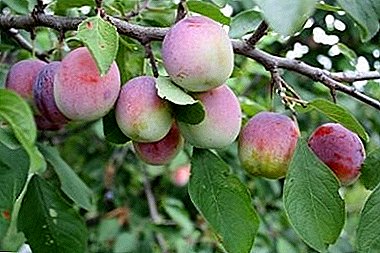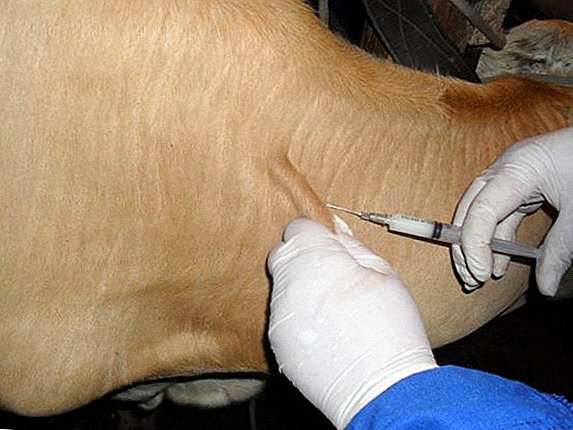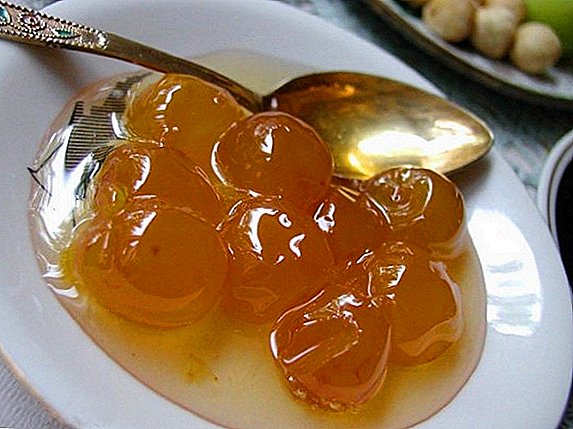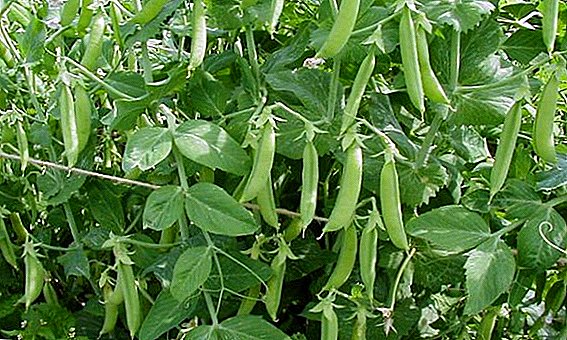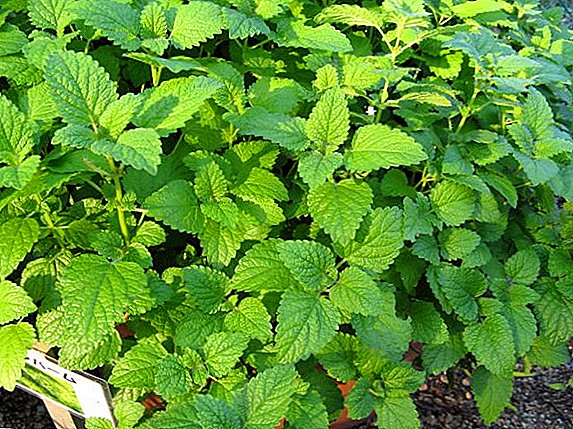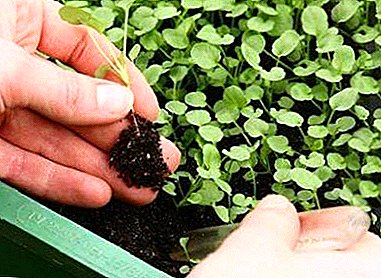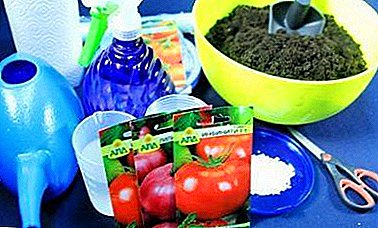
In order to get a bountiful crop of tomatoes, special attention should be paid to the preparation of planting material - seeds.
After carrying out a number of procedures that contribute to the rapid germination of tomato seeds, it is safe to wait for the first shoots for the expected time.
How to prepare the seeds and process the tomatoes before planting? What are the nuances when choosing a seed? This and much more you will learn from our article.
Do I need special preparation for sowing at home?
Important! Sowing dry, unprepared tomato seeds gives germination after about 20 days. This is a relatively long period that gardeners cannot afford.
Besides, possible option and lack of germination of seeds at all, as it is often on the shelves of shops you can find poor quality seed.
That is why it is recommended to check the seeds for viability and germination before direct planting. This will not only save from disappointment, but also significantly reduce the expectation of the first shoots.
Store purchase
 Before you go to a specialty store for seeds, determine the variety of tomatoes. This culture is rich in varieties, choose the desired fruit shape, taste, ripening time, features of care. The information you need is easy to find online.
Before you go to a specialty store for seeds, determine the variety of tomatoes. This culture is rich in varieties, choose the desired fruit shape, taste, ripening time, features of care. The information you need is easy to find online.
Having come to the store, carefully consider the packaging with seeds for the shelf life and integrity of the bag. The smaller the shelf life of seeds, the earlier will appear shoots. For example, if the storage period is 1 year, then the tomato will rise in 4-5 days, if 3 years - in 7-10 days.
It is preferable to give the choice to varieties that are common in growing in your area.
What is the best way to prepare the seeds before use?
February-March is the best time to start preparing seeds for germination.. This time was not chosen by chance: the seedlings will be stronger by the time they are planted in the ground, which will allow it to more easily adapt to the new environment.
Good germination does not take long, you just have to perform a series of procedures with seed material. We will understand in more detail the types of tomato seed preparation.
Sorting
Sorting seed is necessary in order to remove at the initial stage the bad, and most importantly the empty seeds. Such an easy way to sort:
- Prepare saline solution - 1 h / l of salt per 1 cup of water.
- Stir the contents until the salt is completely dissolved.
- Pour the seeds into the solution and leave for 20-25 minutes.
- Analyzing the result: bad seeds will float, and suitable for sowing will remain at the bottom of the glass.
- Carefully remove the bad seeds, and wash the good seeds thoroughly under running water.
- Put them on a dry cloth, then leave to dry completely.
The process of emergence of seeds unsuitable for sowing is explained by the fact that they lack the nutrients necessary for germination. However, it happens that among such seeds, there may be good ones, only over-dried. Therefore, before throwing out the seed, having failed to sort, carefully consider it. Seeds without visible damage can be left.
Germination test
Seeding material before sowing is recommended to germinate. This can be done in the following way:
 We take a plate or other container with low sides, put gauze or cotton wool in it and moisten it with water.
We take a plate or other container with low sides, put gauze or cotton wool in it and moisten it with water.- We spread the seeds, trying to distribute them evenly.
- Water should slightly cover the seeds.
- If cotton is chosen for germination, then it is worth covering the seed with the top, which is also slightly damp.
- Observe regular watering of the seeds, but not watering them. Otherwise, they will either dry out or rot.
- The optimum temperature for germination - 22-25 degrees.
- To create a favorable air humidity, it is recommended to cover the container with a film with a small opening for ventilation.
Awakening
- To speed up the germination process, tomato seeds should be soaked in a small container between two layers of cotton wool or in a bag of gauze.
- The process of soaking short - about 12-18 hours. Water should be at room temperature.
- Every 4-5 hours it must be changed.
It is advisable to raise the seeds regularly from the water.. It is necessary for their oxygenation. For convenience, you can use the film, as described above, which will create the desired microclimate inside the container.
Processing with bioactive substances
To increase the yield, the seeds should be treated with bioactive substances: due to this, the shoots are better formed and grow faster.
Types and methods of fertilizing seed material:
- potato juice, or aloe juice - in a ratio of 1: 1;
- sodium or potassium humate - ¼ h / l per 1 l of water;
- wood ash - 1 h / l ash per 1 liter of water;
- special preparations for seed treatment - "Wirtan Micro", "Immunocytophyte", "Epic".
- Take the seeds, put them in a gauze bag and drop them in the solution for 12 hours.
- Then the seed must be dried without washing with water.
Bubbling
Sparging is an important step in preparing the seed for planting. It consists in enriching seeds with oxygen, which significantly increases the germination rate and germination.
 This procedure will require:
This procedure will require:
- plastic bottle without throat or jar;
- reducer or aquarium compressor.
- Pour water into the bottle, up to about half of the container, lower the hose from the gearbox or compressor into it. When the equipment is turned on, the process of enriching water with oxygen begins.
- We pour the seeds into the bottle, which begin to absorb the water already enriched with air.
- The time of seed bubbling is about 12-18 hours. During this period, mix the seeds several times and change the water.
This process allows you to saturate the seed with oxygen much more than just keeping them in the air, since the air space contains a smaller percentage of oxygen.
After the procedure, leave the seeds until dry. and proceed to the next preparatory stage.
Hardening
Weather conditions can be very changeable. In the spring frost is not uncommon, and in summer the air temperature can drop to 12 degrees. As everyone knows, tomatoes are lovers of heat; for these plants, cold air can cause a poor harvest. Therefore, it is recommended to harden the seed. This procedure helps to increase the resistance of the bush to various pathogens and improve immunity.
reference. Hardened seeds begin to bloom earlier, yield increases by 30-40%, according to the findings of many scientists, breeders. In addition, these seeds sprout as early as 7 days.
The hardening of seed material is the following technology:
- seeds are transferred into a bag of gauze and placed in a refrigerator at night with a temperature of at least +10 degrees;
- we take out the seeds during the day and heat them at a temperature of about +20 degrees
Repeat this process 2-3 times.
Hardening can be carried out with swollen and germinated seeds. This will allow the seedlings are not afraid of night temperatures after landing in the ground. Hardened seedlings yield much earlier than usual.
Warming up
This manipulation should be carried out with seeds that have lain for a long time in cold conditions.. Warming up begins with a temperature within +25 degrees for three days. The next three days gradually raise the temperature to +50 degrees. After this, we add 2-3 degrees daily, bringing it to +80 degrees. Now the seeds are ready for the next type of preparation.
Disinfection
 Disinfection or seed dressing is an important procedure for preparing seed. Often the seeds already before planting contain pathogenic bacteria, so be sure to treat them to avoid subsequent diseases of the bush.
Disinfection or seed dressing is an important procedure for preparing seed. Often the seeds already before planting contain pathogenic bacteria, so be sure to treat them to avoid subsequent diseases of the bush.
Recommendations:
- For disinfection, a solution of 1% potassium permanganate is well suited, in which tomato seeds are placed for 20 minutes.
- If manganese was not at hand, an alternative could be hydrogen peroxide 2-3%. The solution is heated to 45 degrees, then we place in it a bag of seeds for 7-8 minutes.
After disinfection, the seed is soaked in ordinary water for about a day.
We offer to watch a video on how to disinfect tomato seeds:
Hybrid Tomato Grain Processing
Seeds of hybrid varieties do not require hardening and disinfection. This is due to their high immunity to morbidity. Other types of preparation: sorting, bubbling, feeding, soaking and checking for germination - should still be carried out.
The proportions in the processing of bioactive substances remains the same as with conventional varieties of tomatoes.
How to collect the material yourself?
Many gardeners do not burden themselves with collecting seeds from their own crops and buy ready-made seeds in the store, but in vain. After all domestic seeds have a number of advantages over store:
- hand-picked seeds have the best germination;
- the size of domestic seeds is larger;
- seedlings from home seeds are more disease resistant;
- seedling yield is higher.
How to cook tomato seeds for sowing? This procedure is quite simple:
- Select the desired variety of tomatoes to extract seeds.
- We select large and abundantly fruiting tomato bushes.
- We are waiting for the full ripening of the tomato: we pick the fruit and place it in a dry, warm place, for example, on the window sill (for about 14 days).
- When the fruits are soft, you can begin to extract the seeds.
- Cut the tomato in half and take out the whole pulp with a teaspoon.
- For good seed separation, place the pulp in a container of water.
- After this, the seeds are washed, dried with a paper towel or newspaper, laid out in small bags.Board. For convenience, the bags can be signed by specifying the date of packing and grade.
Then you can watch a video on how to independently harvest and harvest tomato seeds:
Storage standards
Having collected the seeds manually, it is important to know the seed storage standards.:
- Observe the temperature regime - + 22-25 degrees.
- Humidity should not be increased - no more than 70%. Exceeding this index may provoke seed germination at the wrong time.
- Store the seeds in a well-packed package in a dark and dry place.
Many hybrid varieties of tomatoes are not suitable for manual seed collection. They are unlikely to retain varietal properties. Never mix seeds of different varieties. This may cause clogging of the variety. Knowing the types of preparation of tomato seeds for sowing, following the recommendations for their collection and storage, you can significantly increase the yield of your favorite vegetable.


 We take a plate or other container with low sides, put gauze or cotton wool in it and moisten it with water.
We take a plate or other container with low sides, put gauze or cotton wool in it and moisten it with water.